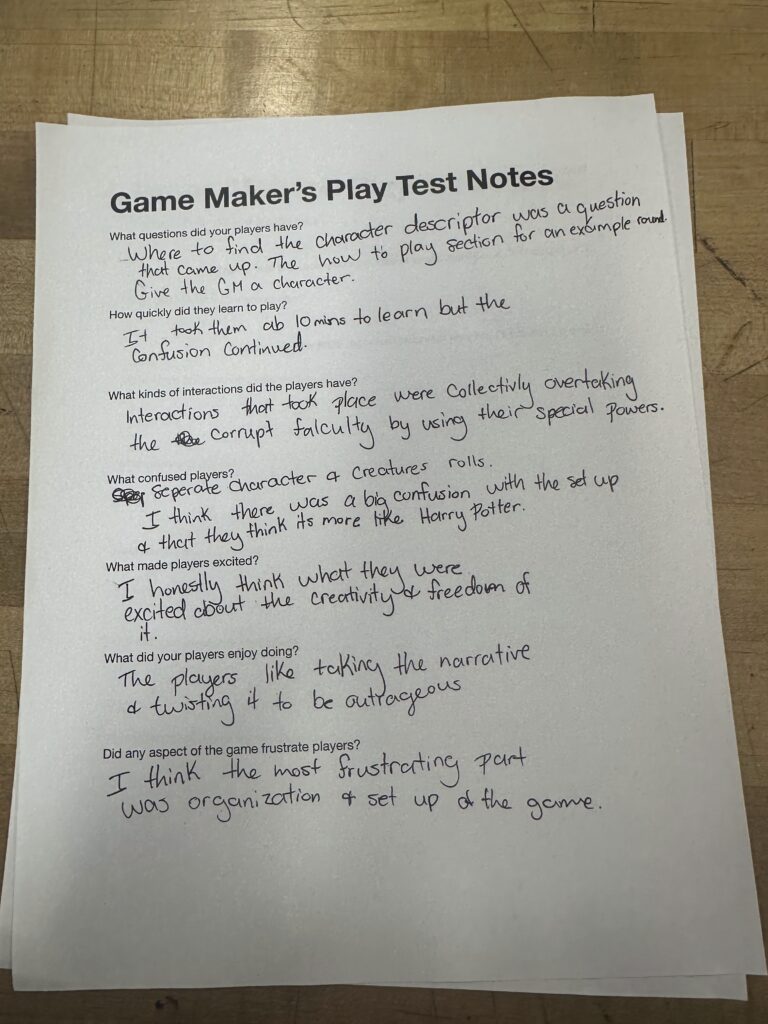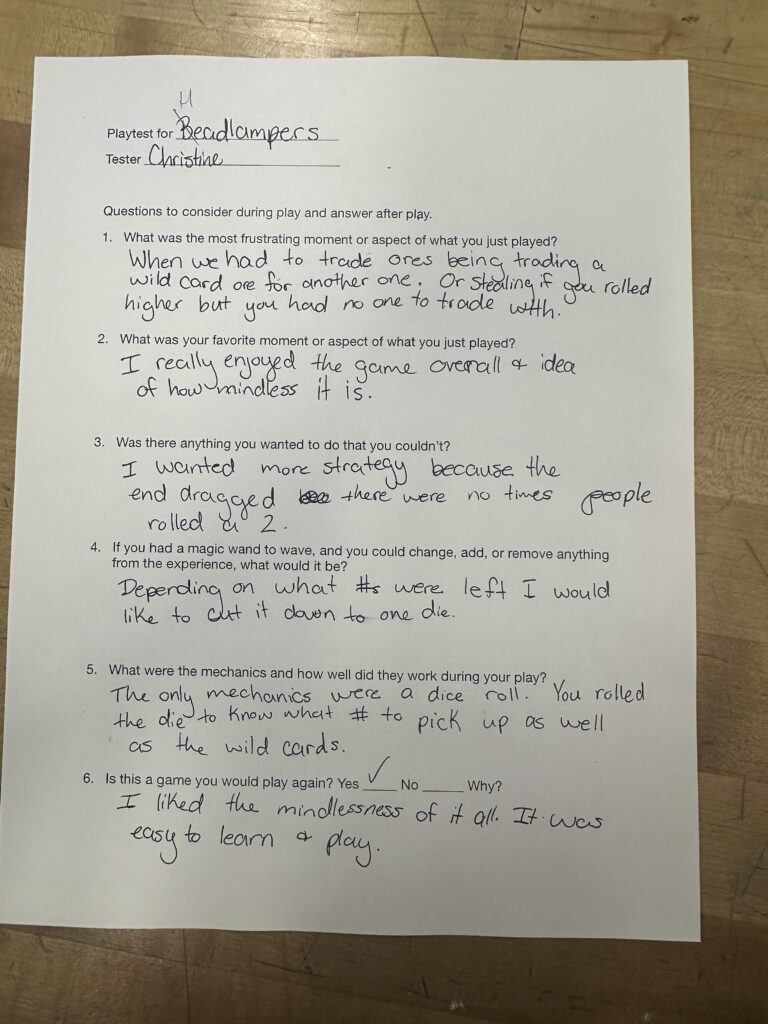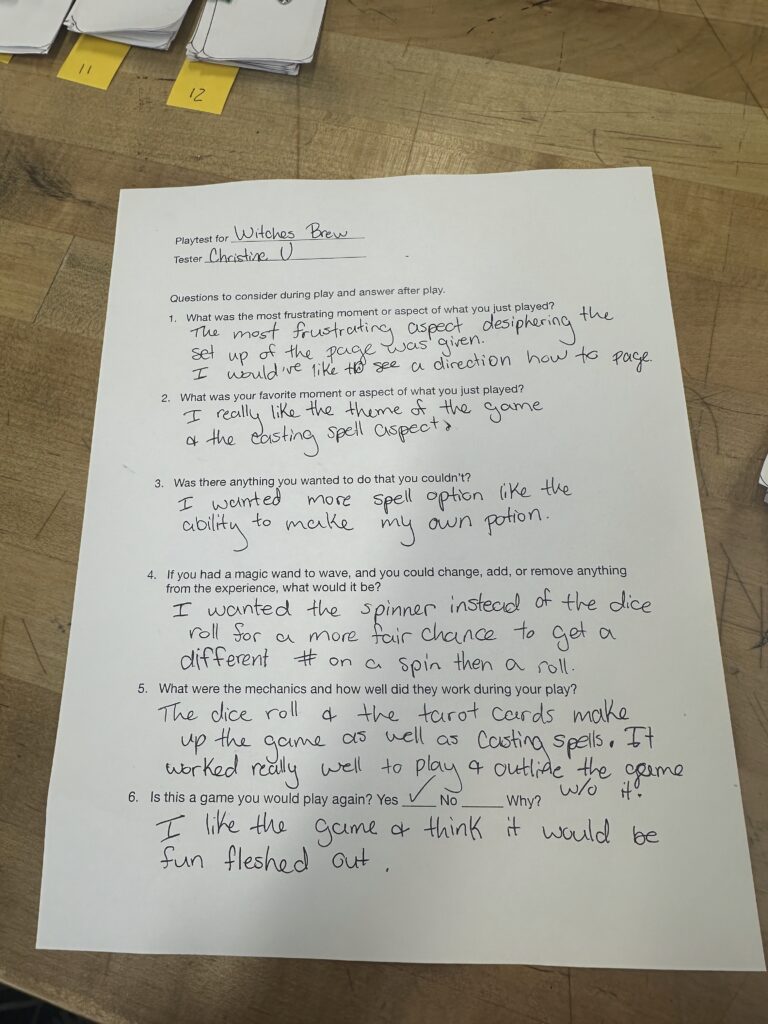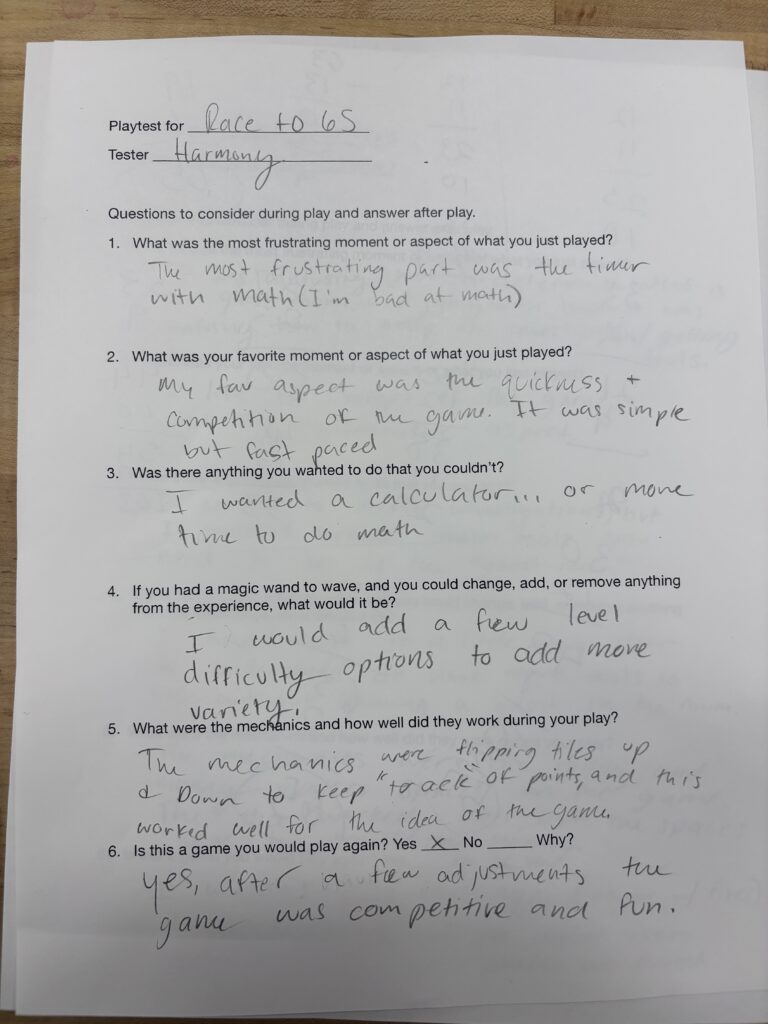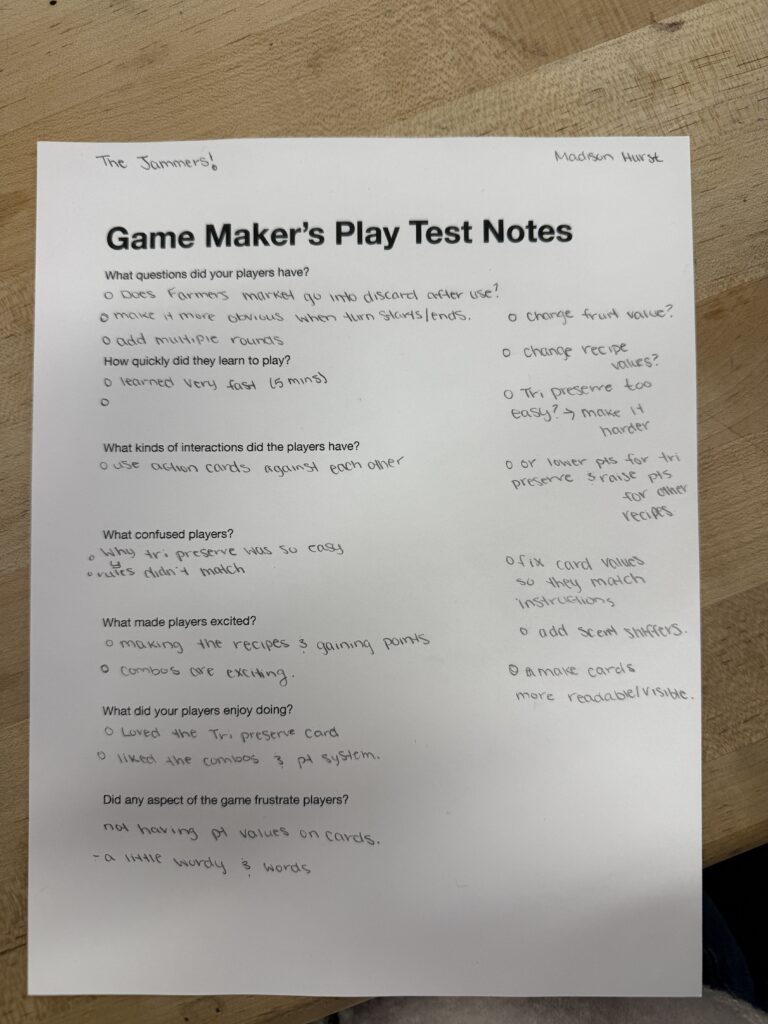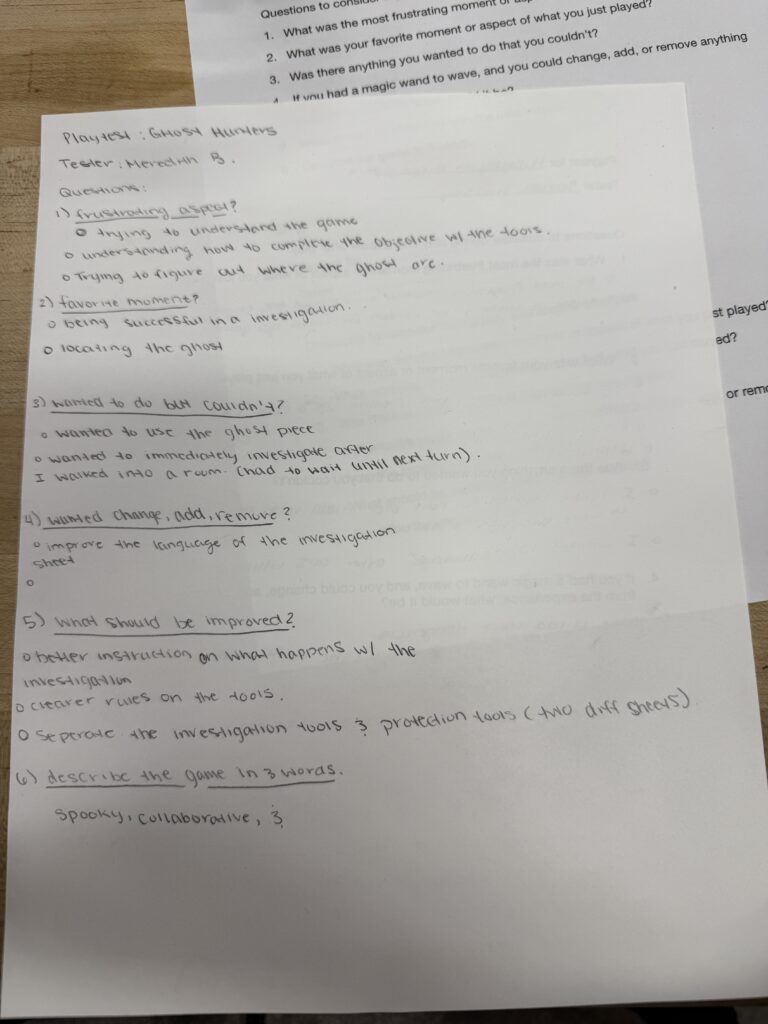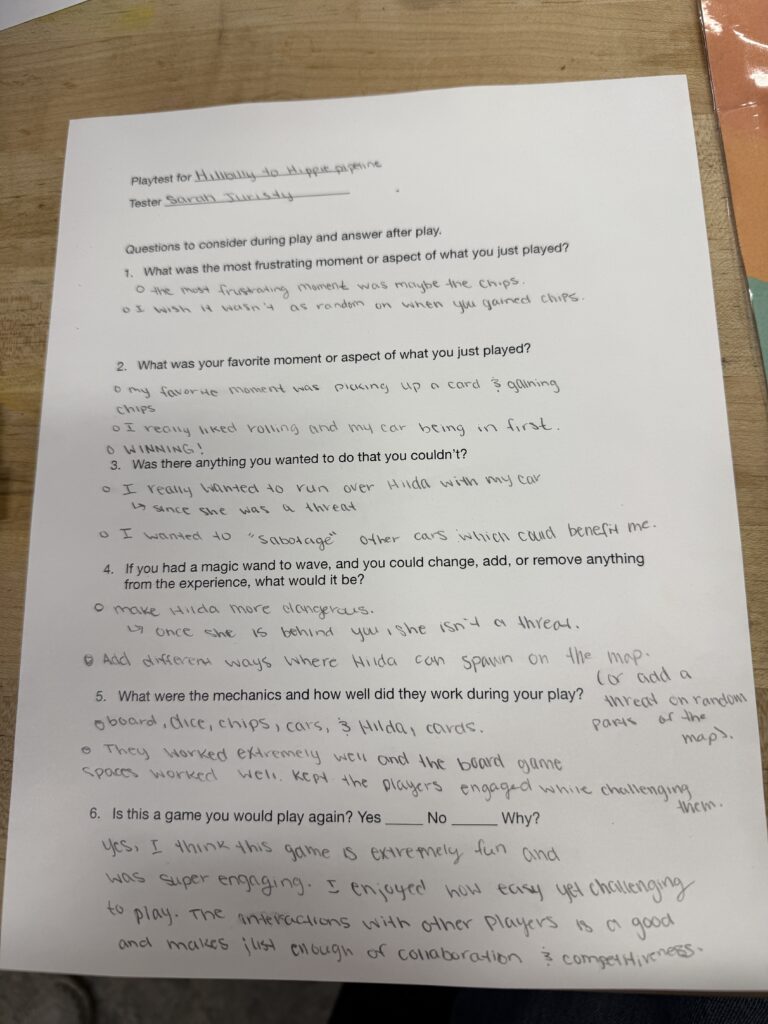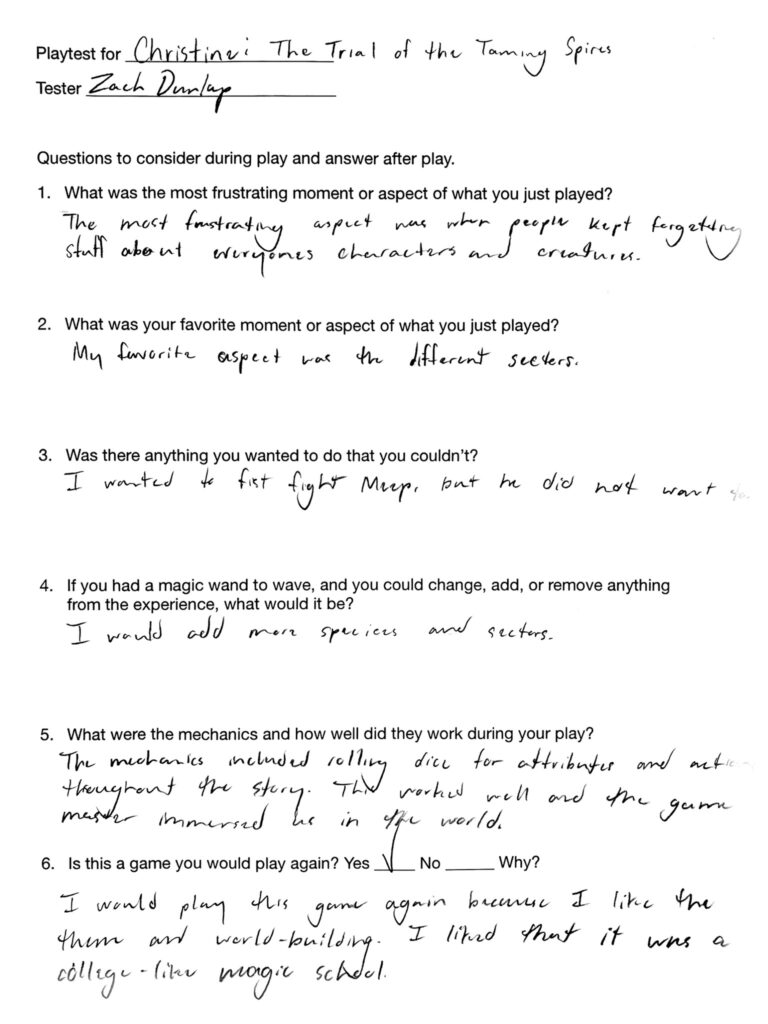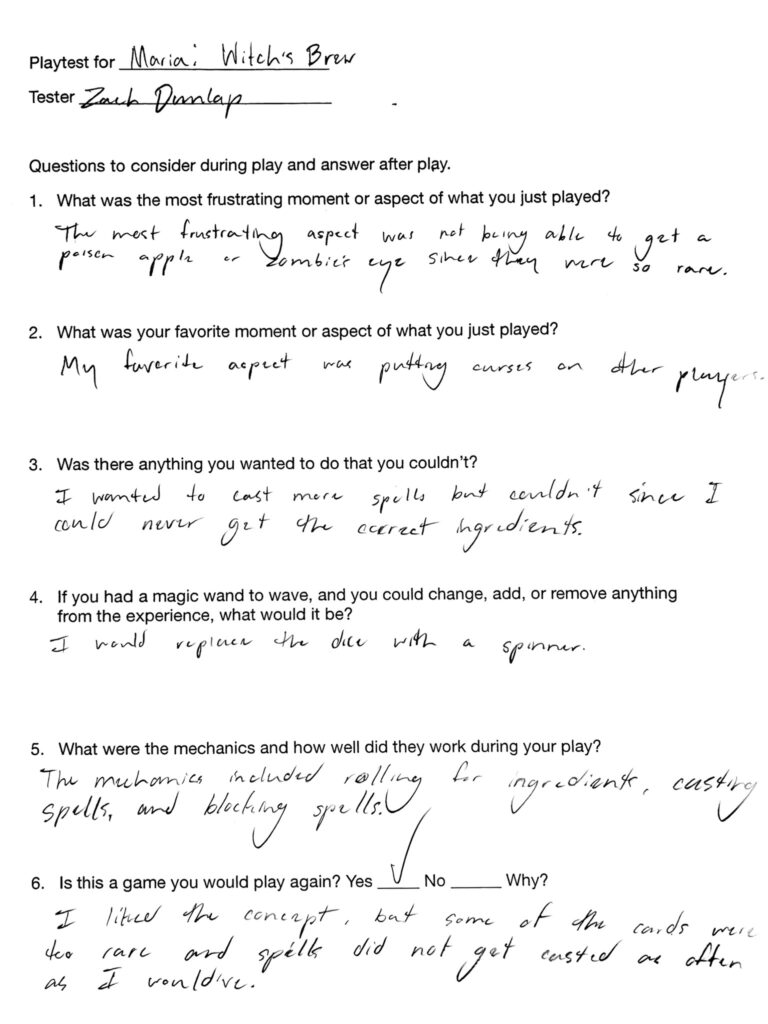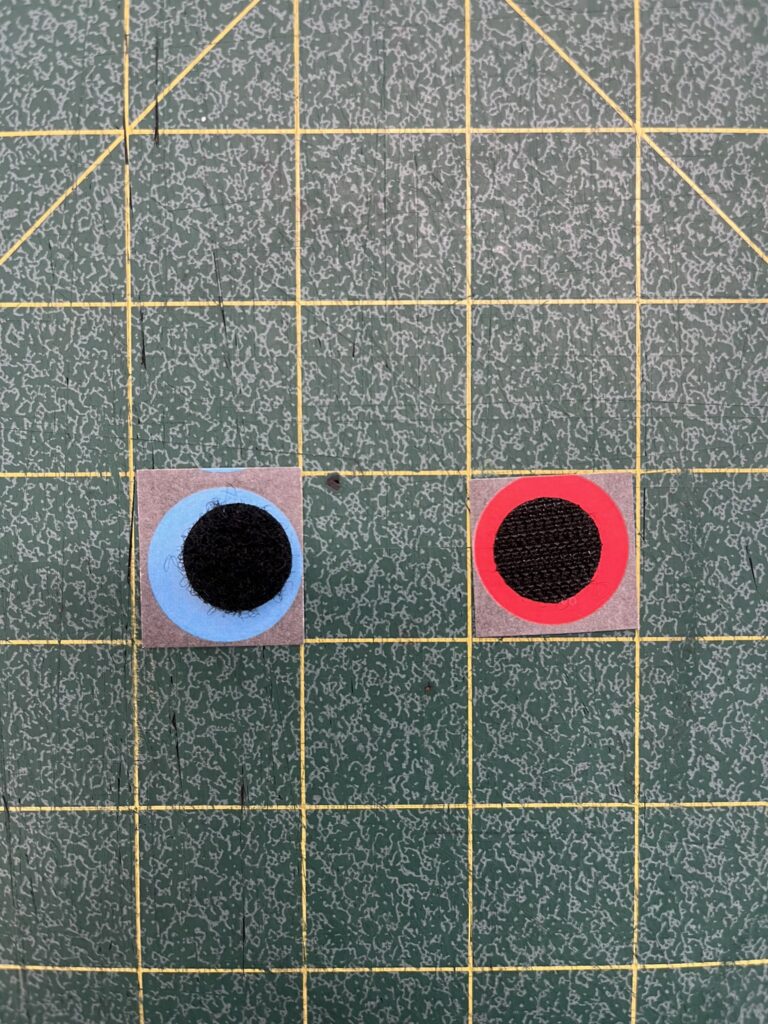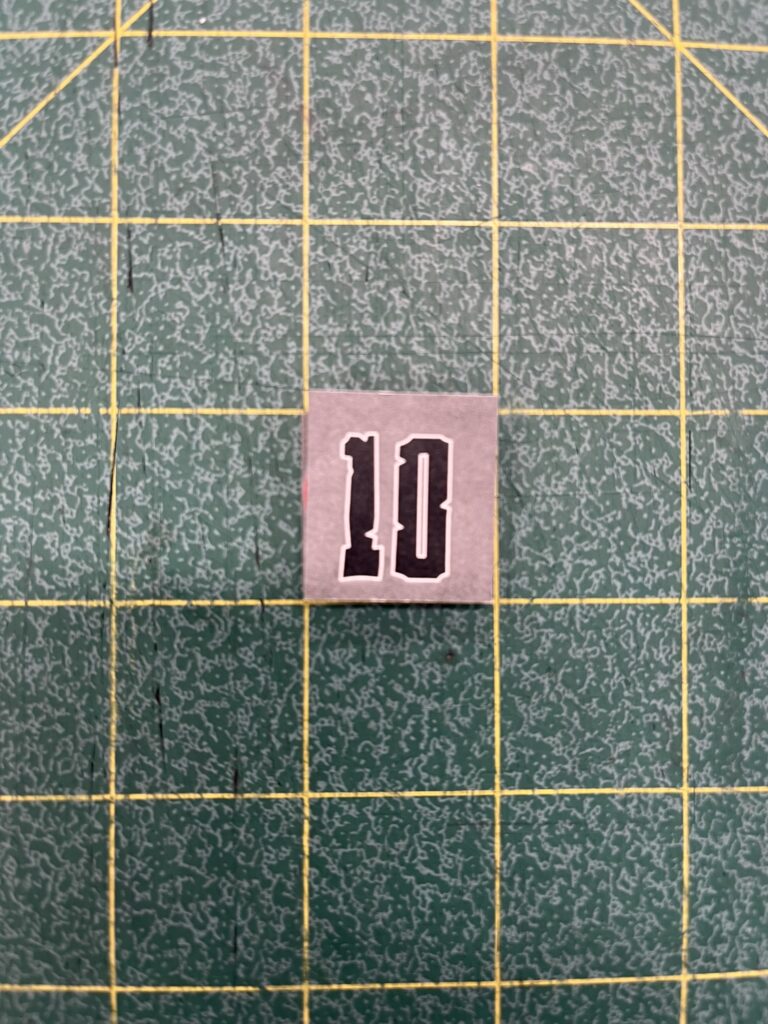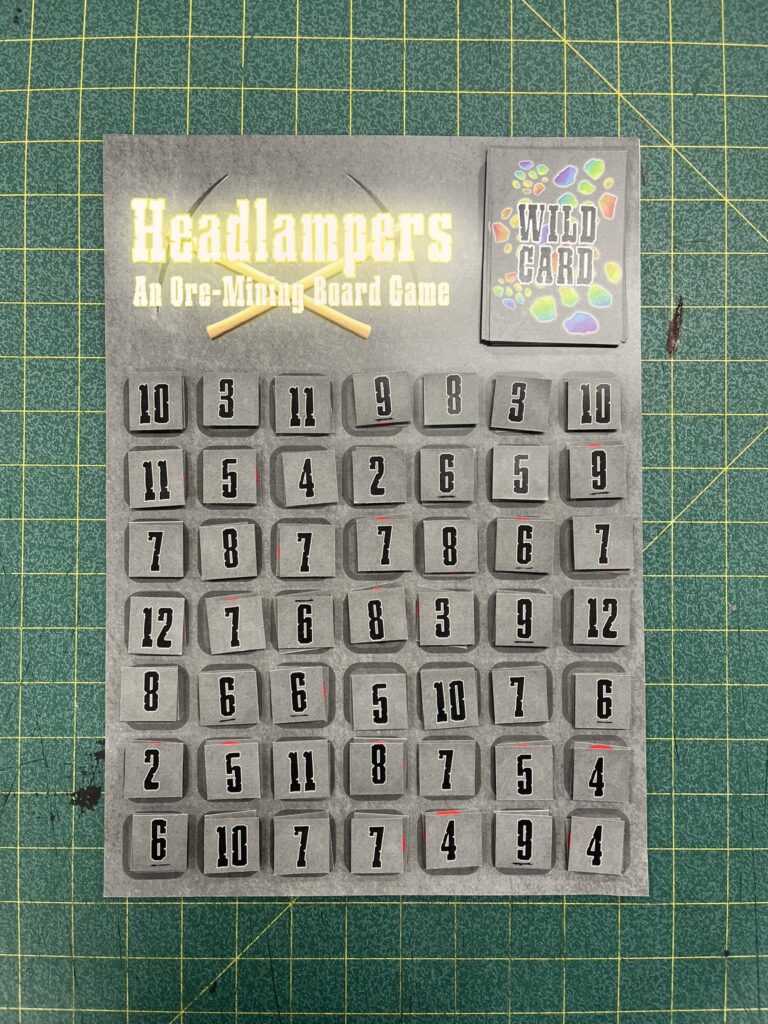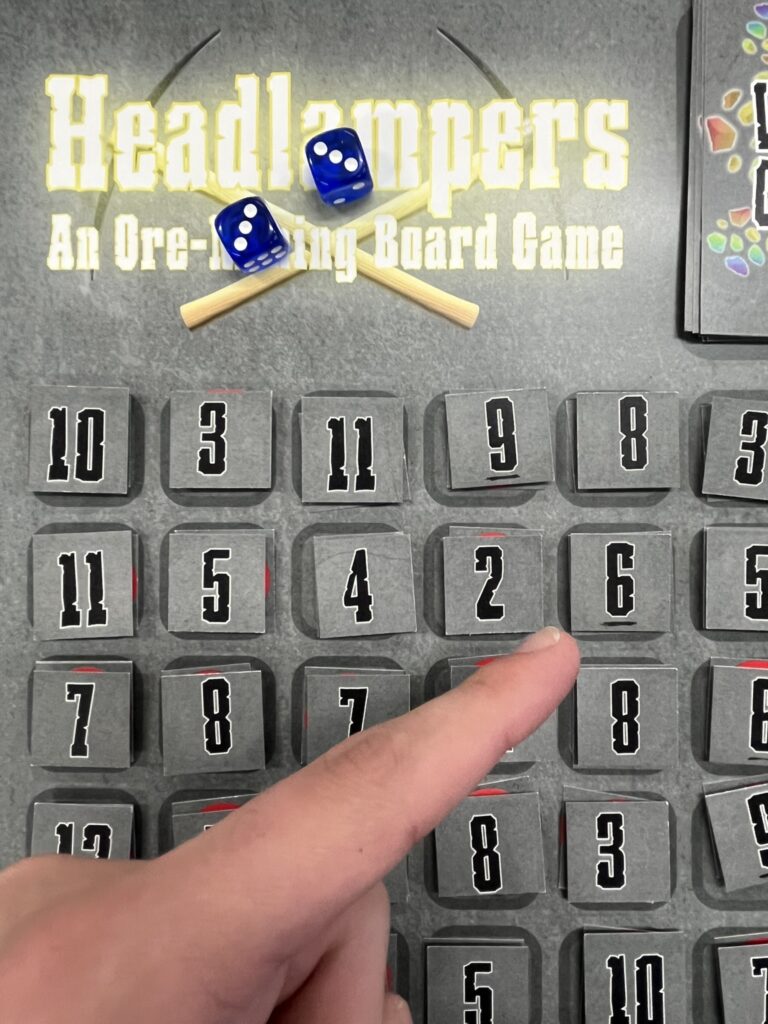Braindump:
Materials:
- Fortune teller
- Deck of cards (52 cards)
- Using tarot cards to build a deck
Sort of go fish
- Fortune teller tells us how many cards to pick up
- Or fortune teller tells us depending of order of cards which one to pick up if u roll a five pick up the fifth card in your deck
- Keep incorrect card and discard other 4 then pick up 4 new cards
Rules:
Take fortune teller select from coin, sword, cup, and wand
Spell one opening and closing each section with each letter spelled
Chose number from the spot left open
Open that section
Read aloud your action
Keep that card in your hand
Select a player
Ask them if they have the same number/person and or suit
Collect all that player has
Discard all cards
Pick up new set or 7
If the ask is unsuccessful
Discard all cards except the one you used in that turn
Then pick up 6
Other player that was asked to replenish hand
Continue with this process until out of cards then shuffle the discard pile

